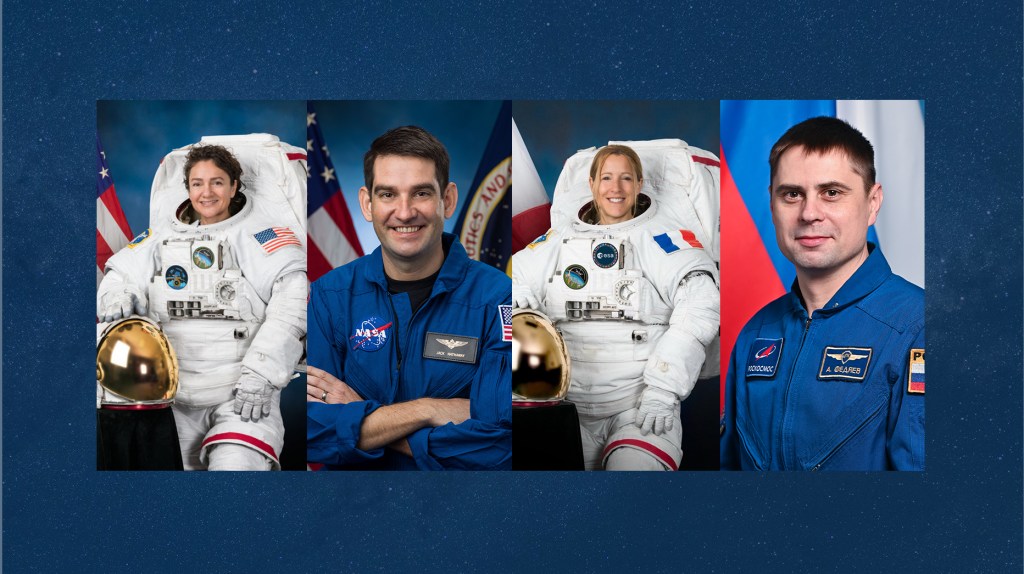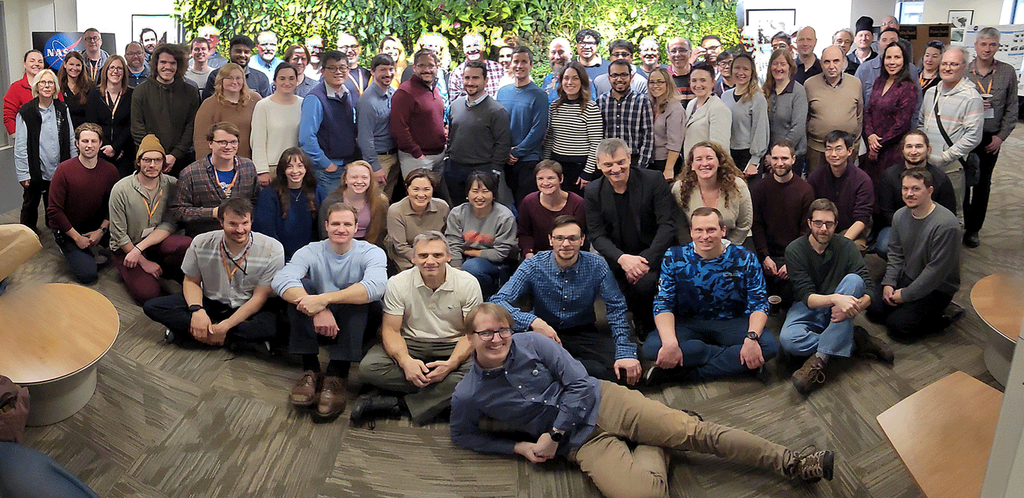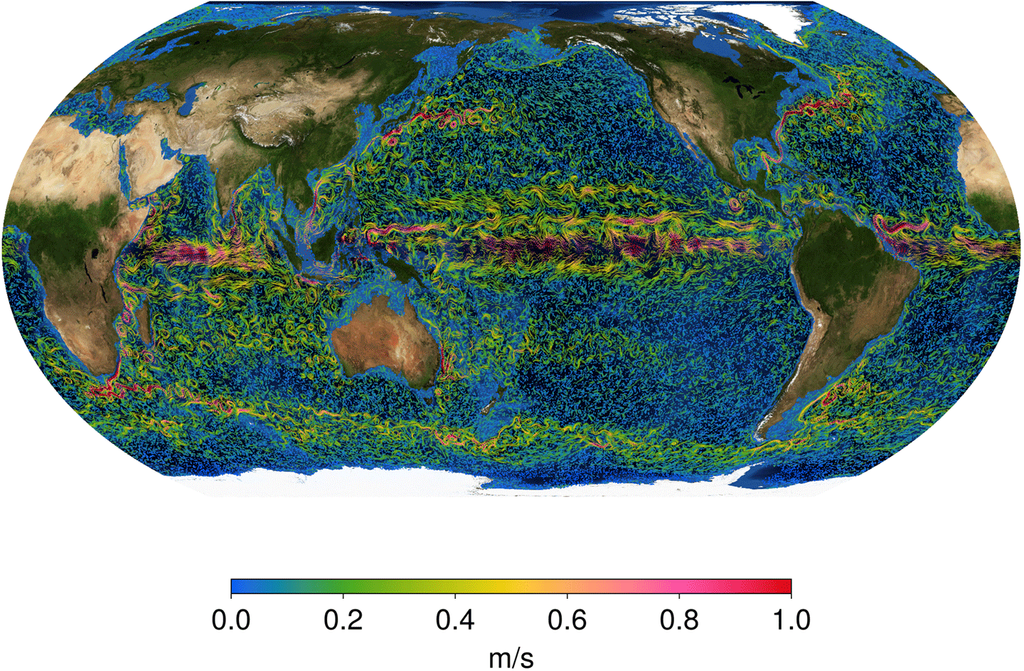Maria Nowak
Contents
Personal Essay
Most everyone who works for NASA at some point is asked, “So, how does someone get a job at NASA?” If you were me, you would start by getting a theater degree from the University of California and then taking a job as a dancing waitress in a 1950s-themed restaurant. In my spare time, I volunteered doing social work, including coordinating volunteers for a local crisis center and preparing Federal Emergency Management Agency paperwork for clients. Through this work, I met the most amazing women who overcame incredible odds to provide a better life for themselves and their families. People like these inspired me to keep going even when my own life seemed off track. This search for a broader meaning in my life led me to study physics, first by reading books as a hobby and then eventually taking courses at a local community college. I loved the way physics teaches you how the things that you take for granted as being random really aren’t random. That sort of structure just made the world a really beautiful and secure place for me.
I ended up transferring to San Diego State University to pursue an undergraduate degree in physics. I like to think of studying physics, or anything really, as training for a sport. You have to do it every day, you have to be fully committed to it, and you can’t be afraid to get dirty or hurt. I researched internships online to build a resume and, in the summer of 1999, I landed an internship at Goddard Space Flight Center (GSFC) writing code for the High Energy Solar Spectroscopic Imager, designed to study solar flares. The experience was so rewarding that I decided that I would like to work at GSFC. I returned to school, chose optics as my field of emphasis, and ultimately graduated first in my class in 2001.
The Optics Branch at GSFC was hiring new engineers at that time, so I applied and was offered a position. Moving to Maryland was a homecoming of sorts for me. My mother’s ninth great-grandfather was Leonard Calvert, the first governor of Maryland, and his wife’s sister, Margaret Brent, is widely noted as the first American suffragette, handling many of the governor’s financial affairs and being the first female landowner in colonial Maryland.
After supporting various sounding rocket projects and receiving my master’s degree in physics from Johns Hopkins University, I moved into my current role as Metrology Lead for the James Webb Space Telescope Integrated Science Instrument Module (ISIM). I was part of a team that developed the cryogenic photogrammetry (PG) system that measured warm to cold deformations of the ISIM structure. I’d never done anything with PG before, which was sort of good because I didn’t have any preconceptions about what the system could or couldn’t be. We had the absolute best people on the team, and they were all totally invested in its success. Getting the system right was an extremely difficult challenge, but it was also the most fun I’ve had in a long time.
Our work paid off. The PG system ended up beating its measurement requirements by nearly a factor of five! It was definitely one of the best moments I’ve had at GSFC. Earlier this year, I won both the Instrument Systems Technology Division and the Applied Engineering and Technology Directorate Engineering Excellence awards for my work on PG.
In addition to my regular duties, I mentor young engineers and participate in various recruiting and outreach projects. One of my favorites was Launchfest in 2008. It was really exciting to open our doors to the public and show them what we do. All these kids kept coming by and saying, “I want to work here! I want to work here!” And I kept saying, “Then do it!I could use the help!” It’s incredible to have a job that generates so much interest and fascination.
People have this idea of the type of person who works here, but the reality is very different. There is a broad mix in terms of skills, personalities, education, and so on, and that’s what really makes this place work. I’d hate to have someone overlook a scientific or technical career because he or she thinks they don’t fit the mold.
So what’s next for this Integration and Test Engineer? It’s hard to say, but I’ll probably be working on James Webb Space Telescope metrology for the next few years. I really like working with hardware and data, but people are really interesting to me. I like figuring out what motivates them and watching them discover things about themselves. But right now I’m having a lot of fun. I can’t wait to see what the future holds for NASA!
Biography

Maria Nowak’s search for a broader meaning in life took her from the floor of a 1950s-themed restaurant where she worked as a dancing waitress, to the esteemed grounds of NASA where she has taken a leading role in the field of physics. However, it was the time she spent as a volunteer doing social work – and the strong and courageous women she met along the way – that most inspired this transformation. Today, Ms. Nowak works in the area of metrology at NASA – another impressive transformation from her first experience with the agency as an intern, writing code. She also supported various rocket sounding projects throughout her career. Although she enjoys working with hardware and data, it’s the people that most interest her, which might explain why she mentors young engineers, participates in various recruiting and outreach projects, and encourages anyone with a passion to work at NASA – regardless of background or education – to explore that possibility. Ms. Nowak earned a BA in theater from the University of California, San Diego, a BS in physics from San Diego State University, and an MS in physics from Johns Hopkins University.































